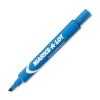daniel craig
Member
- Joined
- Dec 23, 2009
- Messages
- 2,815
So. I'm getting a 9mak handgun. I was thinking to make it easier for me to distinguish between my 9mm Mak and my 9mm Luger ammunition when I have brass cases for both, as well as hopefully making it easier for someone who picks up 9 mm brass for reloading to tell that it's not 9 mm Luger casing, that I would apply brass black from Birchwood Casey to the 9mak casings.
The question is and this might sound like a dumb question so forgive me would it be safe to put brass black on a live round? I don't see why it wouldn't be but I also don't want to screw around with chemicals if they're going to react with the gunpowder in a live round.
The question is and this might sound like a dumb question so forgive me would it be safe to put brass black on a live round? I don't see why it wouldn't be but I also don't want to screw around with chemicals if they're going to react with the gunpowder in a live round.


